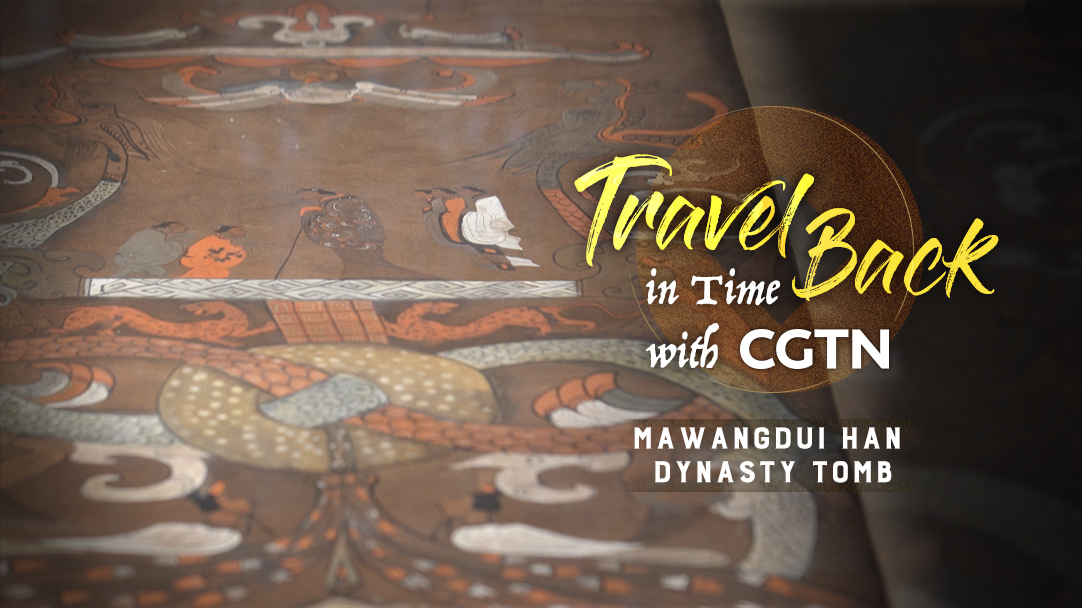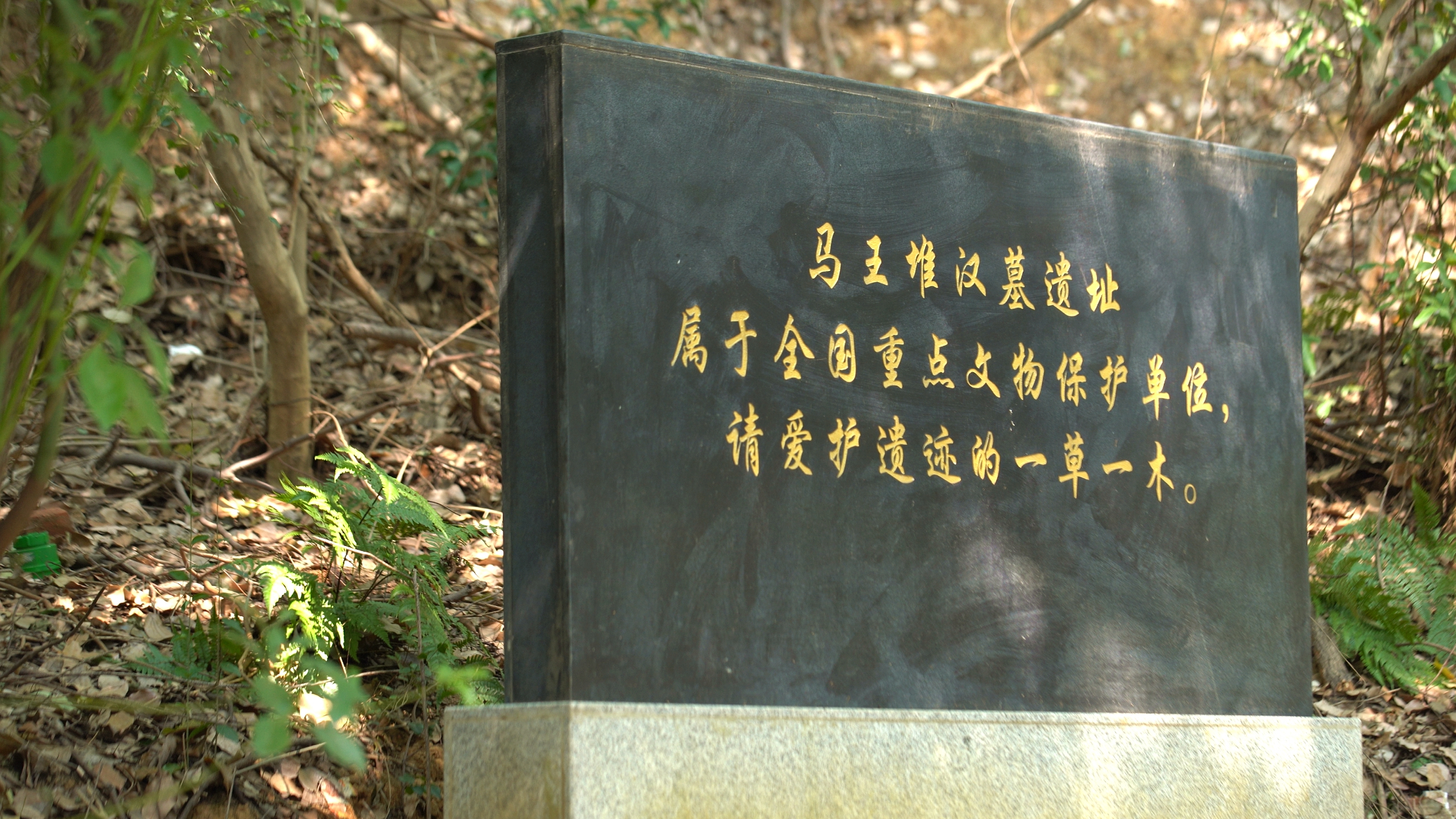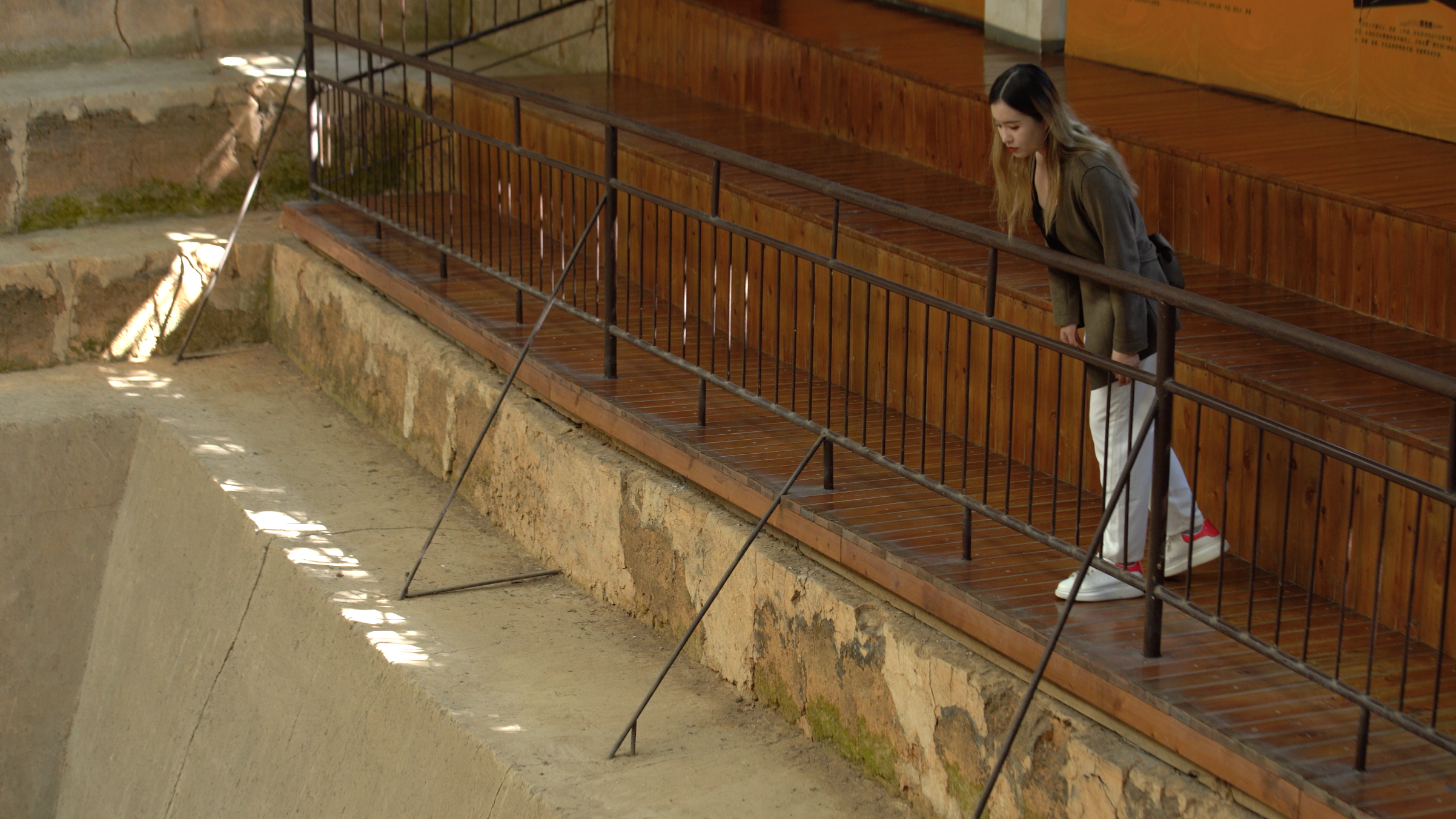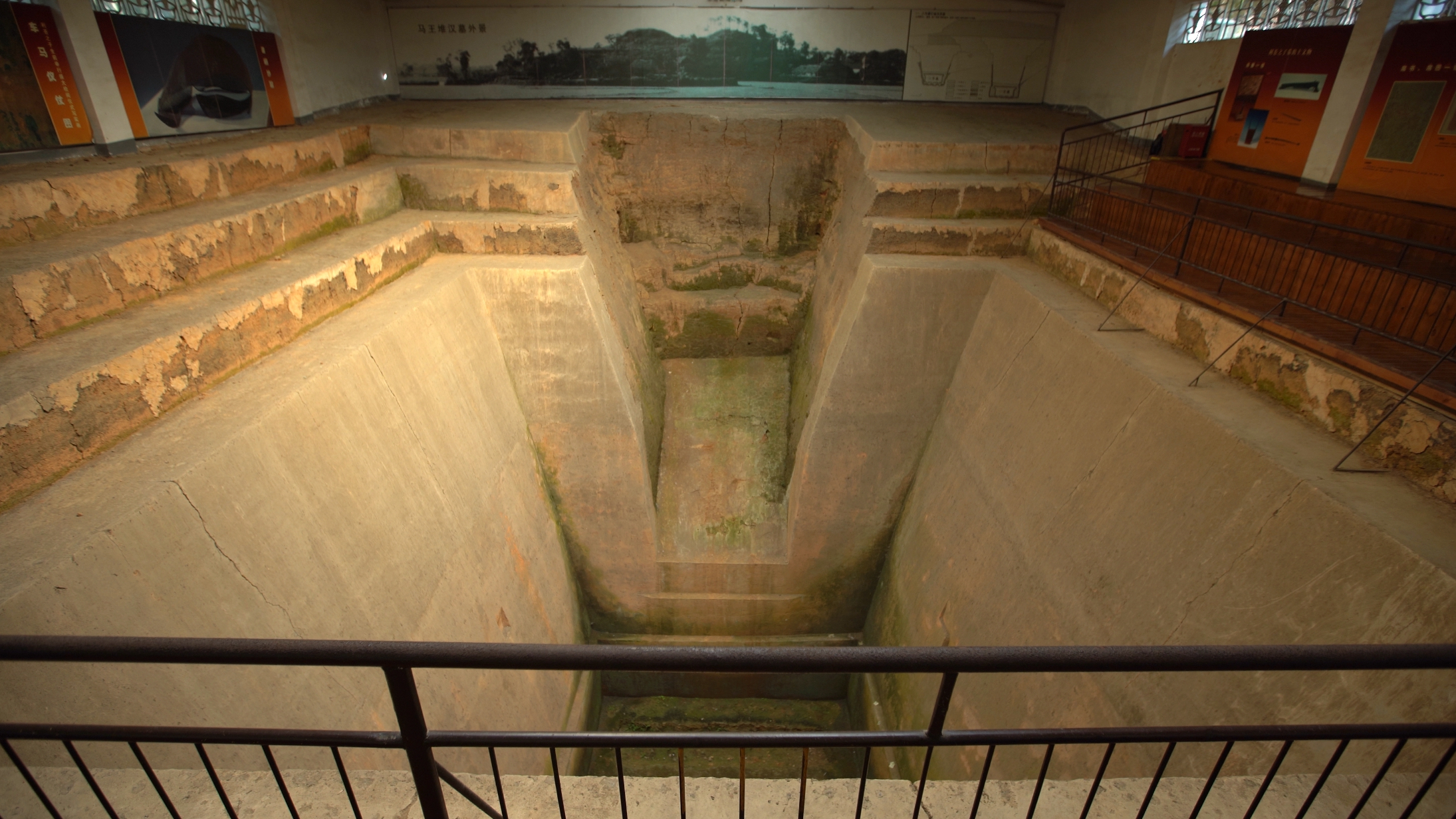04:52

I thought it was a joke when I heard that I would be able to see the real body of an ancient woman from 2,000 years ago.
At first, I was told that we could take a look at the tomb owner instead of the burial objects only. But when I arrived at the Mawangdui Tomb of the Han Dynasty (206 BC-220 AD), it turned out that I could see a real corpse.

A stele at the Mawangdui Han Tomb site in Changsha, capital of central China's Hunan Province. /CGTN Photo
A stele at the Mawangdui Han Tomb site in Changsha, capital of central China's Hunan Province. /CGTN Photo
Mawangdui Han Tomb belongs to the family of the prime minister of Changsha state, Marquis Li Cang of Dai, alongside the body of Li's wife, Xin Zhui, who died several years after her husband and son.
She looks pale with her mouth open and wrinkled skin. When I saw her, she was lying in a glass coffin full of formaldehyde solution in an eight-meter-deep underground palace. I can only see her from the top through the glass roof.

Reporter Li Yimei at the Mawangdui Han Tomb in Changsha, capital of central China's Hunan Province. /CGTN Photo
Reporter Li Yimei at the Mawangdui Han Tomb in Changsha, capital of central China's Hunan Province. /CGTN Photo
Instead of being scared, I was more curious about how this corpse was preserved for more than 2,000 years. Unearthed in 1971, the hair on Xin Zhui's corpse was almost intact, the skin was soft to the touch, and her veins still had type-A blood. After the autopsy, scientists found 138 melon seeds in her stomach and intestines, as well as the cause of death: a heart attack.
Xin Zhui's coffin found in the tomb is like a matryoshka: the body was placed inside the smallest pine box. Her body was soaked in an acidic with little magnesium liquid. The thick layer of soil and clay kept both oxygen and decay-causing bacteria out of her eternal chamber. These natural and artificial conditions kept Xin Zhui's corpse untouched through 2,000 years.

A view inside the tomb in Changsha, capital of central China's Hunan Province. /CGTN Photo
A view inside the tomb in Changsha, capital of central China's Hunan Province. /CGTN Photo
More than 1,000 precious artifacts, including fine paintings, makeup, lacquerware, wooden figures, were unearthed from Xin Zhui's tomb, revealing her life as a wife of high-ranking Han official Li Cang, Marquis of Dai.
At present, the best-preserved corpse in history is displaying in Hunan Provincial Museum. We were not allowed to take pictures of her. Therefore, I highly recommend all of you to visit the museum in person and have a look at this mysterious woman from 2,000 years ago.
Reporter: Li Yimei
Scriptwriter: Li Yimei
Editor: Zhang Ziyu
Copy editors: Vanessa Gu, Liane Ferreir
Chief editors: Chen Ran, Qin Xiaohu, Wang Dongmei
Cover image: Yin Yating
Executive producer: Zhang Xiaohe
Producer: Si Nan
Supervisor: Zhang Shilei